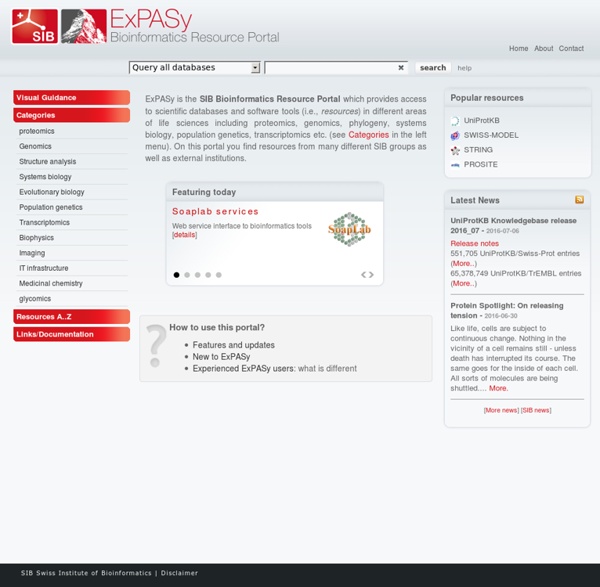



PDB A Structural View of Biology This resource is powered by the Protein Data Bank archive-information about the 3D shapes of proteins, nucleic acids, and complex assemblies that helps students and researchers understand all aspects of biomedicine and agriculture, from protein synthesis to health and disease. As a member of the wwPDB, the RCSB PDB curates and annotates PDB data. The RCSB PDB builds upon the data by creating tools and resources for research and education in molecular biology, structural biology, computational biology, and beyond. Use this website to access curated and integrated biological macromolecular information in the context of function, biological processes, evolution, pathways, and disease states. A Molecular View of HIV Therapy January Molecule of the Month Nuclear Pore Complex Deposition Preparation Tools Data Extraction Small Molecules Ligand Expo: Search the Chemical Component Dictionary for the IDs of released ligands Data Format Conversion 3D Structure Viewers
Alignments PRALINE - is a multiple sequence alignment program with many options to optimize the information for each of the input sequences; e.g. global or local preprocessing, predicted secondary structure information and iteration capabilities. (Reference: V.A. Simossis et al. (2005) Nucleic Acids Res. 33: 816-824). A similar type of output can be obtained using SPEM (Laboratory of Biophysics & Bioinformatics, University of Buffalo, U.S.A.). Example of PRALINE output: Gene Context Tool - is an incredible tool for visualizing the genome context of a gene or group of genes (synteny). In the following diagram an RpoN (Sigma54) protein was analyzed. CARNA is a tool for multiple alignment of RNA molecules. Dryad Digital Repository - Dryad NCBI Pfam ONLINE ANALYSIS TOOLS Les données de la recherche Données brutes, traitées, dérivées ? Une distinction portant, à la fois sur le cycle de vie et la nature des données, s'est imposée progressivement, tout en suscitant de nombreuses questions et des débats entre chercheurs ; il s'agit de la distinction entre données brutes, traitées et dérivées. Les données "brutes" (raw data) correspondraient aux enregistrements directs, factuels, d'une réalité (par exemple, des relevés météorologiques). Mais la notion de donnée brute pose problème, d'abord en SHS, où les données (sociales, économiques, textuelles, etc.), sont toujours le produit d'une construction, d'une problématique de recherche, d'un contexte. En sciences humaines, les données ne sont jamais "brutes", mais bien "données" (voir le billet de Sylvie Fayet). Données ouvertes ? "Une donnée ouverte est une donnée qui peut être librement utilisée, réutilisée et redistribuée par quiconque - sujette seulement, au plus, à une exigence d’attribution et de partage à l’identique."
UCSC PubMed - NCBI Sequence Alignments Web Alignments are nucleotide and protein alignments that represent the fullest spectrum of sequences in the database. Filtered Web Alignments are a filtered subset of sequences from the web alignments. These alignments are cleaner, but contain slightly less information. Subtype Reference Alignments contain approximately 4 representatives of each subtype. Compendium Alignments are the subset of sequences printed in the HIV Sequence Compendium. Consensus/Ancestral Sequences include a consensus for each subtype, an M-group consensus-of-consensuses, and some ancestral sequences. Javascript required This tool depends upon Javascript for its interactive features. * “2008” alignments contains sequences published before 2009. ** User-defined ranges are clipped from a genome alignment. Web Alignments What sequences are included These alignments are complete, meaning that they contain all sequences we have in the database, with some exceptions: Only one sequence per patient is included.
Thesaurus Hepitope: HLA-Enriched Possible Epitope The Hepitope tool searches for hopeful-epitopes or "Hepitopes". The tool tests for HLA alleles that are enriched in a set of individuals that react with a set of peptides. This can be used in conjunction with ELF (Epitope Location Finder) to scan the peptides for known epitopes in the database and anchor motifs to help identify epitopes within a larger peptide fragment. Input To look for HLA enrichment in reactive individuals, we just do a 2 by 2 contingency table. a The number of individuals that carry the HLA allele and react with the peptide b The number of individuals that do not carry the HLA allele and react with the peptide c The number of individuals that carry the HLA allele and do not react with the peptide d The number of individuals that do not carry the HLA allele and do not react with the peptide The input requires two files: The output provides a recapitulation of the input files and the results for each peptide, including a list of the HLA's of each patient.
wiki Toll-like receptor signaling pathway - Homo sapiens (human)